In today’s world, the creation and appreciation of art are evolving quickly. As we integrate technology into our everyday lives, art and technology are merging in fascinating ways. With digital paintings and virtual reality exhibits, the use of technology is unlocking new opportunities in visual arts. For an art teacher, this technology integration in art involves combining traditional techniques with modern tools in innovative ways. This article will look at how artists and educators are adapting to these changes and revolutionizing the art world.
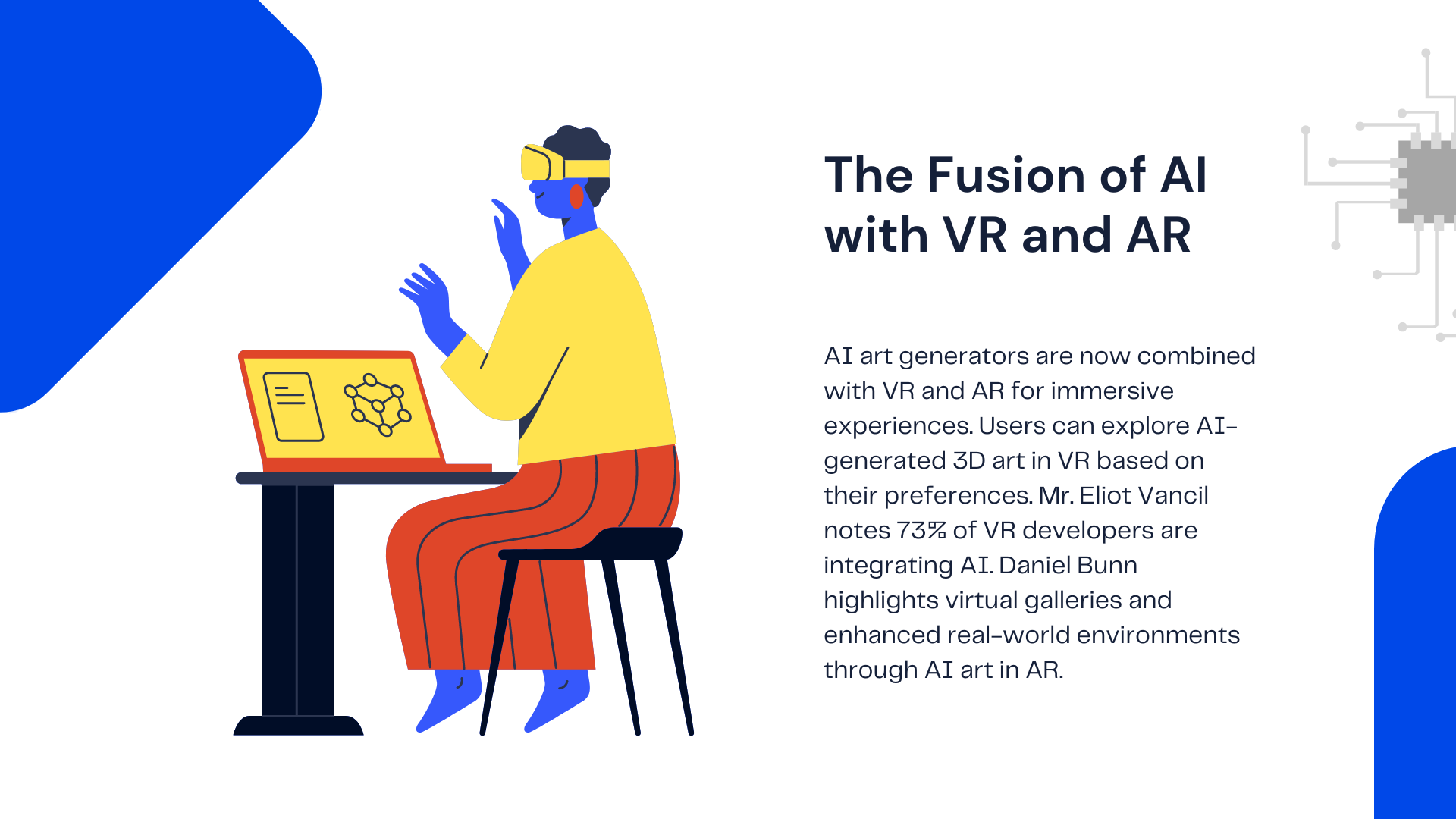
How Are AI Art Generators Being Integrated with Other Technologies Like Virtual Reality and Augmented Reality?
AI art generators are not just limited to creating digital art on screens; they are now being combined with virtual reality (VR) and augmented reality (AR) to offer new experiences. In VR, users can step into an AI-generated art world, exploring and interacting with the artwork in a 3D space. This makes the experience much more immersive and engaging.
Mr. Eliot Vancil, the CEO of Fuel Logic in Dallas, shares his thoughts: “This field of AI art generators and their integration with VR and AR is truly unique.
Consider this perspective: Instead of a pre-designed world, you put on VR headgear and begin exploring a landscape generated on the spot by an AI based on your artistic preferences. That is the potential of AI art in VR. According to a recent survey, a significant 73% of VR developers are in the process of integrating AI-generated elements into their experiences.”
Similarly, Daniel Bunn, Managing Director at Innovate, says, “AI art generators are increasingly being integrated with virtual reality (VR) and augmented reality (AR) to create immersive and interactive experiences. By combining AI-generated art with VR, users can explore virtual galleries or participate in art creation within a 3D space. In AR, AI art can overlay digital creations onto the real world, enhancing environments with dynamic visuals.”
What Are Some Innovative Projects That Combine AI-Generated Art with Other Digital Technologies?
There are many exciting projects out there that combine AI-generated art with other digital technologies. For instance, some artists and developers are using AI to create music videos where the visuals are generated in real-time based on the music. This creates a unique and synchronized experience that changes with every beat.
Mr. Eliot Vancil highlights one such project: “However, it is not limited to augmented reality. The opportunities are excellent. Recently, I observed a project in which artists employed artificial intelligence to design interactive murals that responded to the user’s contact. An additional example employed AR to project fantasy creatures on city streets, therefore radically altering the environment. It is similar to entering a living, breathing canvas.”
Another example is using AI art in virtual museum tours. Daniel Bunn explains, “Innovative projects include virtual museum tours where AI art adapts based on user interactions and AR apps that transform physical spaces with AI-generated murals. AI art can also be used in interactive installations, allowing visitors to influence the artwork in real time through movement or input, creating a personalized and engaging experience. These integrations make art more accessible and interactive, pushing the boundaries of creativity and technology.”
How Can AI Art Be Used in Interactive Installations or Immersive Experiences?
AI art can play a significant role in interactive installations and immersive experiences. These installations can respond to the presence or actions of the viewers, creating a dynamic and engaging experience. For instance, an AI-generated art installation might change its visuals based on the movement or emotions of the viewers.
Mr. Eliot Vancil discusses his experience: “Although this technology is still in its infancy, how it is employed to create immersive experiences and interactive installations is truly inspiring. It recalls memories of my tenure as the leader of Network Logic, during which I continually pursued new opportunities and pushed the boundaries. These artists are using the surface of our entire world to accomplish the same task. It is an exciting era to be alive, and I am eager to discover the next levels of this technology.”
How Digital Tools Enhance Traditional Art Education
Digital tools are transforming how we create art and teach it in art classrooms. In the visual arts classroom, technology can enhance the art experience by providing new ways for students to explore their creativity. For example, digital art software allows students to experiment with colors and techniques that would be hard to achieve with traditional materials. This tech integration not only broadens their skills but also makes art education more engaging.
Art teachers are finding that technology can enhance the art room by making it easier to demonstrate concepts and techniques. Interactive apps and online resources bring fresh ideas into the art studio, helping students understand and apply what they learn. By integrating technology into the visual arts, teachers can offer more personalized instruction, catering to the individual needs of each student.
Partnerships in arts education are also benefiting from the use of technology. Collaborations between schools and tech companies provide students with access to cutting-edge tools and resources. This not only enriches the K-12 art curriculum but also prepares students for future opportunities in digital art. Overall, technology can enhance the art experience by blending traditional art with modern innovations, making art education more dynamic and inclusive.
Artificial Intelligence: Partner or Rival?
Artificial Intelligence (AI) is making waves in the art world, and there’s a lively debate about whether it’s a partner or a rival for human artists. AI-generated art is on the rise, and it’s changing how we think about creativity. In art rooms across the country, students are working with AI tools to explore new art forms and create unique digital portfolios. Integrating the arts with technology from the National Center for Technology Innovation shows us that AI can bring many benefits to the arts.
Art students using AI can experiment in ways that were not possible before. The art of education at the university level is evolving to include AI, which allows students to push the boundaries of their creativity. Some of the benefits of the arts in this new era include:
- Expanding creative possibilities: AI helps students try out different styles and techniques quickly.
- Personalized learning: AI tools can adapt to each student’s learning pace, making learning in the arts more effective.
- Resource accessibility: Platforms like Avid Open Access make advanced tools available to more students. By integrating AI into the art classroom, we can enhance the learning experience and open new doors for young artists.
Exploring Purely Digital Art Forms
Exploring purely digital art forms, such as generative art and VR experiences, is transforming how students engage with creativity in the art studio. Implementing technology in education through digital tools allows for innovative teaching and learning approaches in K–12 art classes. For example, students using generative art software can create intricate patterns and designs that evolve based on algorithms and inputs, demonstrating their grasp of digital techniques alongside traditional skills.
In the art studio, these tools provide a platform for students to experiment and expand their creativity. By manipulating digital canvases or immersing themselves in virtual reality environments, they can explore new dimensions of artistry. This hands-on approach enhances their art skills and fosters critical thinking and problem-solving abilities.
The center for implementing technology in education advocates for integrating these digital art forms into the curriculum, enhancing students’ understanding of technology’s role in artistic expression. As students experiment with digital art, they develop a deeper appreciation for how technology can broaden artistic possibilities. This integration not only prepares them for future careers in digital media but also enriches their educational experience in the art classroom.
Will Technology Replace Traditional Methods?
While technology offers many powerful ways to merge technology with art education, it’s important to consider whether it will completely replace traditional methods. Traditional arts, like painting or sculpting, have a tactile and hands-on aspect that technology can’t fully replicate. For example, when students mold clay or mix colors on a palette, they learn through touch and experimentation in ways that screens cannot provide.
However, the importance of technology integration in art cannot be denied. It provides access to a variety of art forms through virtual art galleries and virtual tours. Museums like the Museum of Modern Art offer online exhibitions that let students from all over the world explore art they might never see otherwise. This broadens their exposure and understanding of the arts. Several apps also help students create digital art, offering a new dimension to their creativity.
technology integration in art curriculum can keep students engaged, especially older students who might find traditional methods less appealing. By merging technology with art education, teachers can introduce interactive lessons that hold students’ attention better.
The capacity to integrate technology in arts also helps in making art education more inclusive. Students who might not have access to certain materials can use digital tools to express their creativity. In this way, technology complements traditional methods, offering a balanced approach to arts education.
Can Technology Help Save Endangered Artworks?
Can technology help save endangered artworks? This question is increasingly relevant in today’s world, where art conservation faces numerous challenges. Technology offers innovative solutions that can aid in preserving and protecting artworks for future generations. For instance, digital imaging techniques can capture detailed images of fragile artworks, allowing conservators to analyze their condition without risking damage. This digital documentation helps in monitoring the artwork’s deterioration over time and planning conservation efforts accordingly.
In addition to imaging, technology allows for the replication of artworks through 3D scanning and printing. This enables museums and conservationists to create replicas that can be displayed to the public while preserving the originals in controlled environments. Moreover, advancements in virtual reality (VR) and augmented reality (AR) provide immersive experiences that can bring endangered artworks to life for viewers around the world. These technologies not only enhance accessibility but also educate the public about cultural heritage and the importance of conservation efforts.
In the realm of education,technology integration in art classes can also play a role in raising awareness about endangered artworks. For example, incorporating digital portfolios and multimedia presentations in art education allows students to explore and learn about endangered artworks from different cultures. This STEAM (Science, Technology, Engineering, Arts, Mathematics) approach encourages students to mix and create digital audio tracks to create their own music, as well as manipulate traditional art forms to find a balance
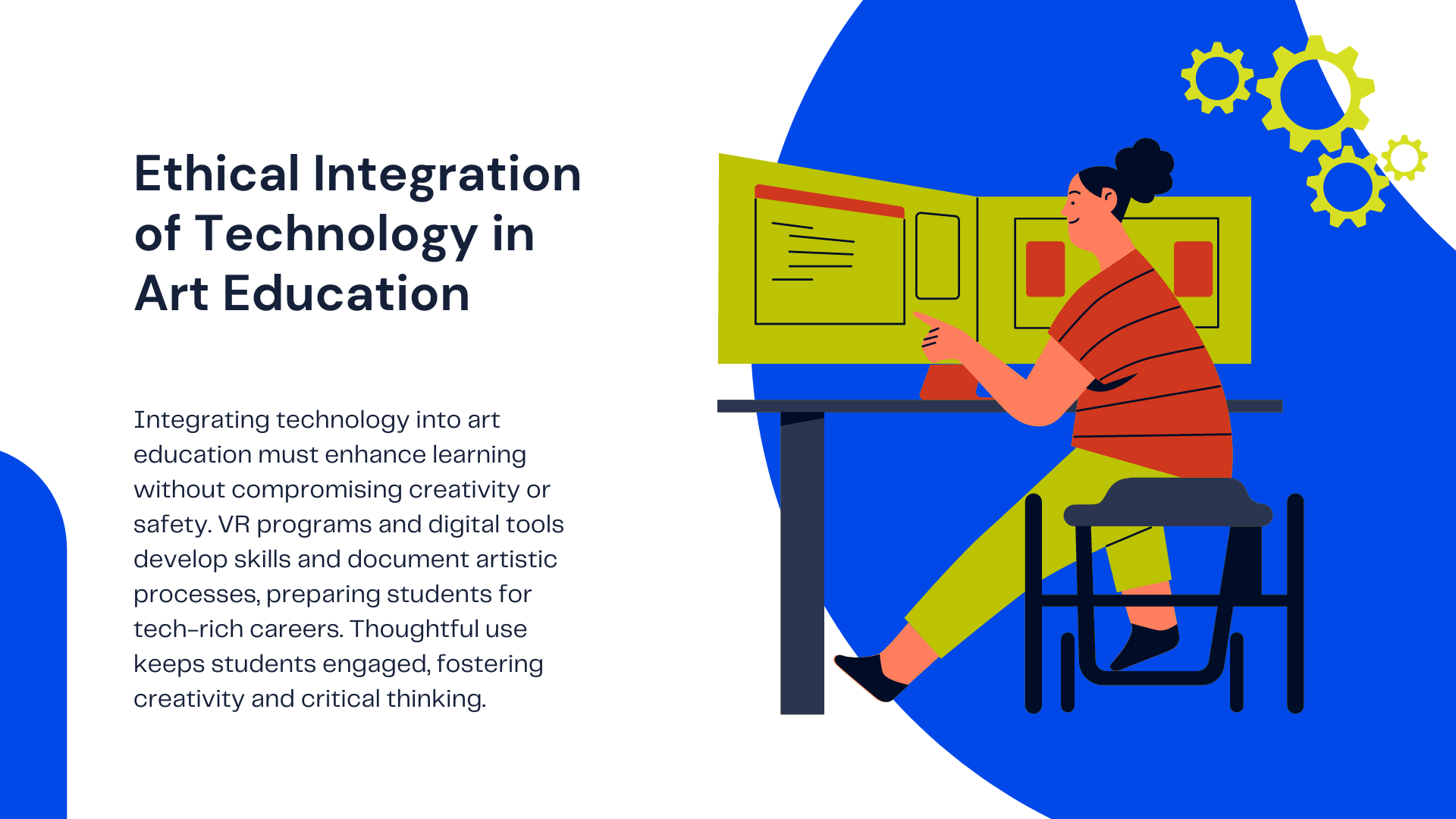
Ethical Considerations in Tech-Integrated Art
When it comes to integrating technology into art education, ethical considerations play a crucial role. Teachers need to ensure that the use of technology in art classes enhances learning without compromising students’ creativity or safety. For example, providing students with VR programs lets them draw and create in virtual environments, which can be exciting and beneficial for developing their 21st-century learning skills. However, it’s important for educators to monitor and guide how students use these tools to ensure they are used responsibly and ethically.
In today’s tech-rich world, the growing importance of technology integration in art is undeniable. It helps students to document their artistic processes in a variety of ways, from digital portfolios to multimedia presentations. This not only benefits students in their artistic growth but also prepares them for success in a tech-rich world of work. By integrating technology thoughtfully, teachers can find powerful ways to merge the world of work and artistic possibility, keeping students interested and engaged while fostering their creativity and critical thinking skills.
Airbrush AI: Transforming Text into Stunning Visual Art

Airbrush AI is a cutting-edge tool that turns your text into beautiful images, making it a valuable asset for artists, students, and teachers alike. This innovative tool helps users create stunning visuals by simply describing what they want to see. Here are some of the key features and benefits of Airbrush AI:
- Ease of use: Just enter your text, and the tool quickly generates high-quality images.
- Sparks creativity: Enables artists and students to try out different styles and concepts with minimal effort.
- Educational enhancement: Helps teachers guide students in visualizing their ideas more effectively.
- Time-saving: Reduces the time required to produce detailed artwork, allowing for more focus on creative development.
- Versatile applications: Perfect for a variety of projects, from classroom assignments to professional art pieces.
With Airbrush AI, integrating technology into art becomes a seamless and engaging process, opening up new possibilities for creativity and learning.
Concluding the Discussion on Technology Integration in Art
In conclusion, technology integration in art opens up exciting possibilities for both students and educators. It enhances creativity by providing easy-to-learn programs for experimenting with digital tools and a variety of natural media brushes and tools. Students can explore different art forms and techniques, from digital art to augmented reality, enriching their learning experience. Virtual reality adds another dimension, allowing students to create art around themselves in real-time using headsets and motion control hand sensors. This technology integration in art not only prepares students for the digital age but also fosters a deeper appreciation for art across cultures and mediums. By using technology in art classrooms, we ensure that students are equipped with the skills and creativity needed to thrive in the modern world.



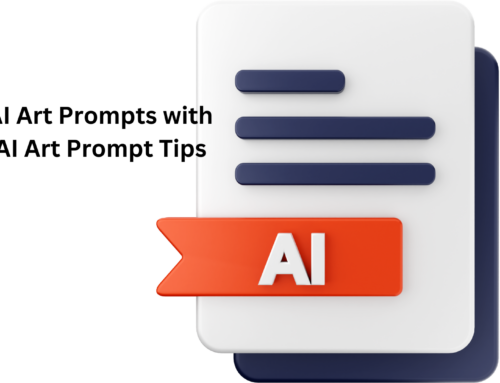
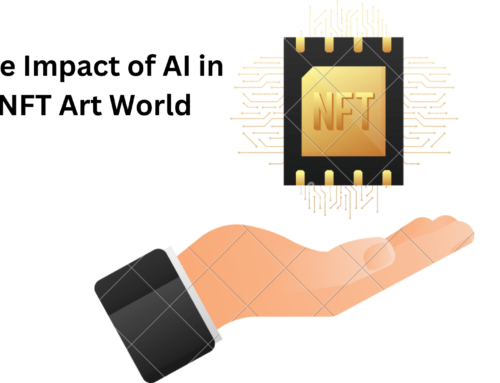
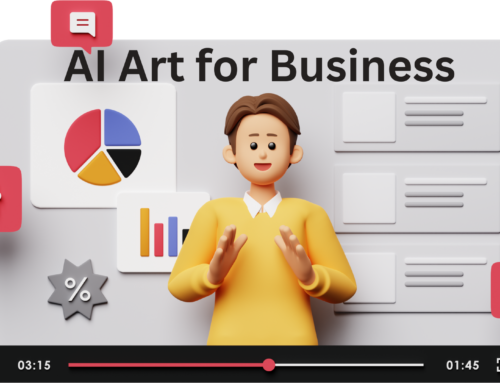


Leave A Comment